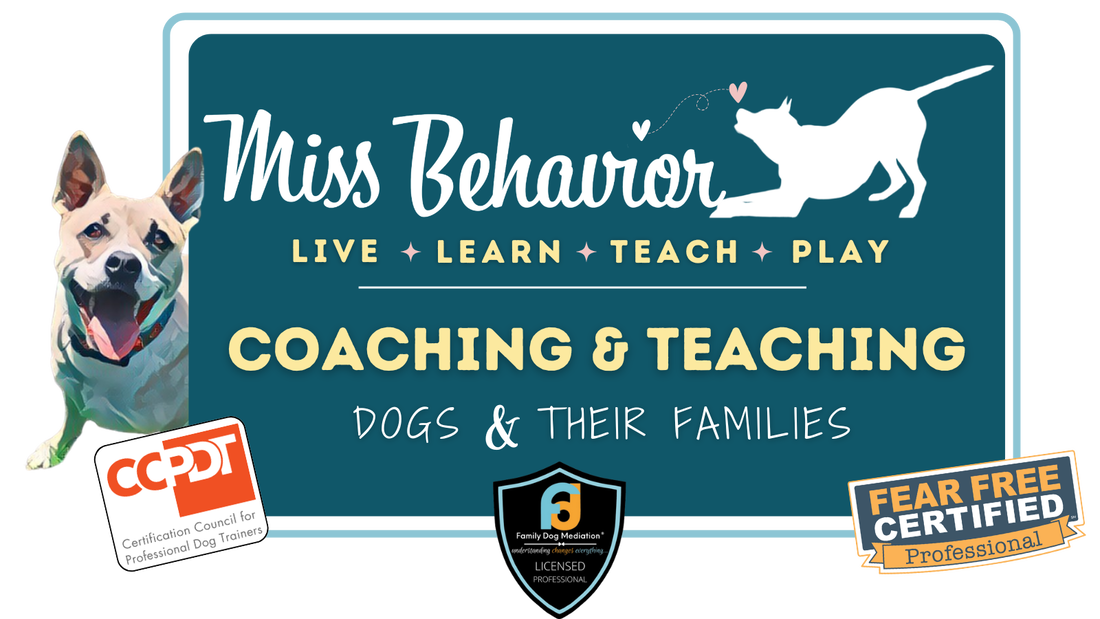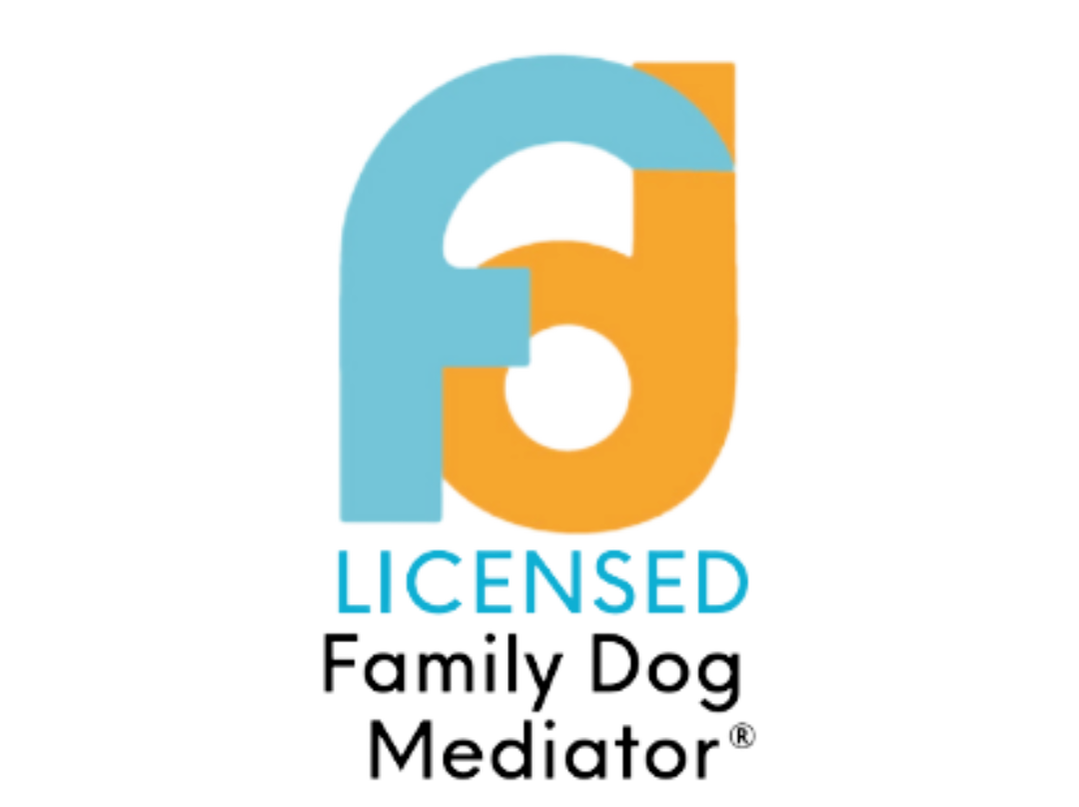The Behavior Road BlockEver work with your dog, feel like you're making good momentum, and then get STUCK somewhere in the process? Me too. When your dog's training plan doesn’t seem to be working, it’s easy to feel frustrated or unsure about what to change. The EVAL Process is a great tool for analyzing what might be going wrong and where to adjust your approach. It focuses on four key areas: Experience, Value, Action, and Level. By taking a closer look at each of these areas, you can identify the source of the issue and find a path forward. Let's look at the 4 different ways you can EVAL where things are not working... Before we jump in, I do want to stress the importance of having your Veterinarian on board and aware of any sudden behavior changes in your dog. More often than not, sudden changes are linked to underlying medical issues that show up in our dog's behavior before showing up through physical means. A recent study shows that "Musculoskeletal but also painful gastro-intestinal and dermatological conditions are commonly recognized as significant to the animal’s problem behavior." Source That being said, assuming that your dog has had a Veterinary check-up and was cleared, sometimes the only way to determine whether to go down the road of further testing is by trying to shift the behavior plans to see if that brings further progress. So let's take a look at the EVAL Process... Experience: How Full is Your Dog’s Learning Bank? Experience refers to how much practice your dog has had performing certain behaviors and what they’ve learned from those experiences. Every behavior your dog performs leads to some form of reinforcement, whether positive or negative, which adds or takes away from their "learning bank." Think of this as a savings account: every time your dog successfully performs a behavior and receives a reward, you’re making a deposit into their learning bank. This increases the likelihood that they will perform the behavior again in the future. On the other hand, if a behavior leads to the removal of something your dog values, such as freedom or playtime, you’re making a withdrawal. Questions to Consider:
Example: If your dog comes to you when called and you immediately put on a leash and end their playtime, they may begin to associate coming when called with the loss of freedom. To avoid this, try alternating outcomes—sometimes put the leash on, and other times, give them a treat and let them keep playing. This way, you're keeping the reward bank full. Remember... The goal is to fill up your dog’s learning bank with positive experiences so that when you occasionally have to make a withdrawal (like leashing up after recall), your dog is still in the positive. Value: Is the Reward Truly Rewarding? Next, you'll want to evaluate the Value of the reward you are using or reinforcing your dog with. The value of a reward lies in your dog’s opinion, not yours. What you think should be motivating may not be valuable to your dog in that particular moment. For example, you might assume that tossing a ball for your dog is rewarding, but what if your dog would rather chew on it or engage in a game of tug? The value of a reward can also shift depending on the environment or the presence of distractions. What might work at home—like a piece of kibble—may not hold up against the excitement of the outdoors, where smells, sounds, and other distractions are competing for your dog’s attention. Questions to consider:
Remember... Always ensure that the reward you’re offering is something your dog truly wants, especially when working in more challenging environments. Action: Timing and Consistency are Key Action is a critical part of the EVAL method, and it refers to how quickly and CLEARLY you are taking ACTION with your dog. If there is a delay between when your dog performs the behavior and when you mark or reward it, they might not connect the reward to the behavior you’re trying to reinforce. Worse, they could associate the reward with something else entirely. Timing is everything when it comes to effective training. For example, if you’re teaching your dog to stay, and you call them to you before rewarding them, you’re likely reinforcing the recall, not the stay. To build a stronger “stay,” you need to reward your dog while they are staying—not after they've broken position. Questions to Consider:
Example: If you want to reinforce your dog’s stay, you should go back to them while they’re still in position and give them a treat. This way, you’re rewarding the desired behavior before they have a chance to move. Remember... The quicker and clearer you are with your reinforcement, the better your dog will understand which behaviors lead to rewards. Level: Matching the Challenge to Your Dog’s Ability Finally, you'll want to look at the LEVEL. The level of difficulty plays a major role in whether your dog can successfully perform a behavior. Just like people, dogs can become overwhelmed if the task is too challenging or the environment too distracting. A dog who can walk nicely on a leash in the backyard may struggle to do the same on a busy trail filled with new smells and sounds. It’s important to ensure that the level of the ask is appropriate for your dog’s current skills and emotional state. If your dog is stressed, anxious, or too excited, their ability to focus and perform learned behaviors will be diminished. Questions to Consider:
Example: If your dog is struggling to walk on a leash in a new environment, it may be time to step back and practice in a less challenging setting. Build up their skills gradually by increasing the level of distraction slowly, rather than jumping from a calm environment to a highly stimulating one. Remember... Work within your dog’s learning zone and gradually increase the difficulty as they build confidence and skill. By evaluating your training through the EVAL Process—Experience, Value, Action, and Level—you can pinpoint where things might be going wrong and make the necessary adjustments. Whether it’s increasing the value of your rewards, improving your timing, or lowering the difficulty of the task, these small shifts can lead to big improvements. Reflection: Which part of the EVAL process do you and your dog struggle with the most? Share your experiences in the comments, or reach out if you need personalized help with troubleshooting your dog’s training. Which part of the EVAL process do you and your dog struggle with the most? Share your experiences in the comments! Watch the video below for even more information about what this may look like. Then hop on over to the Virtual Membership to get support not only on what and why you might be stuck but HOW to actually take the next steps forward! Or contact me today to set up virtual or in-person coaching and consulting for your family dog
0 Comments
Your comment will be posted after it is approved.
Leave a Reply. |
|
- Home
- About
- Blog
- Services
- Membership
-
Courses & Freebies
- All Courses
- FREE Boredom Buster Recipes
- COURSE: Building Resilience in your Family Dog
- COURSE: Managing the Leash Walk
- Potty Training COURSE
- Paws Off COURSE
- COURSE: Managing the Leash Walk
- FREE Attention Building Challenge
- FREE Scratchboard Training
- FREE Rest and Recovery Round-Up
- FREE Body Language 101
- Contact
- Home
- About
- Blog
- Services
- Membership
-
Courses & Freebies
- All Courses
- FREE Boredom Buster Recipes
- COURSE: Building Resilience in your Family Dog
- COURSE: Managing the Leash Walk
- Potty Training COURSE
- Paws Off COURSE
- COURSE: Managing the Leash Walk
- FREE Attention Building Challenge
- FREE Scratchboard Training
- FREE Rest and Recovery Round-Up
- FREE Body Language 101
- Contact
Search by typing & pressing enter




 RSS Feed
RSS Feed





